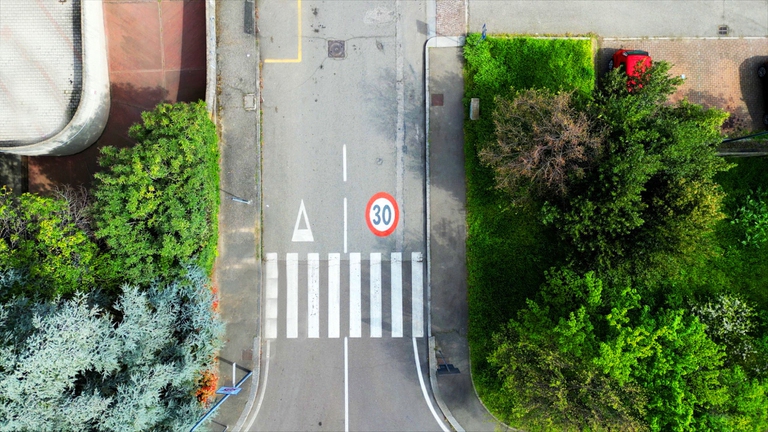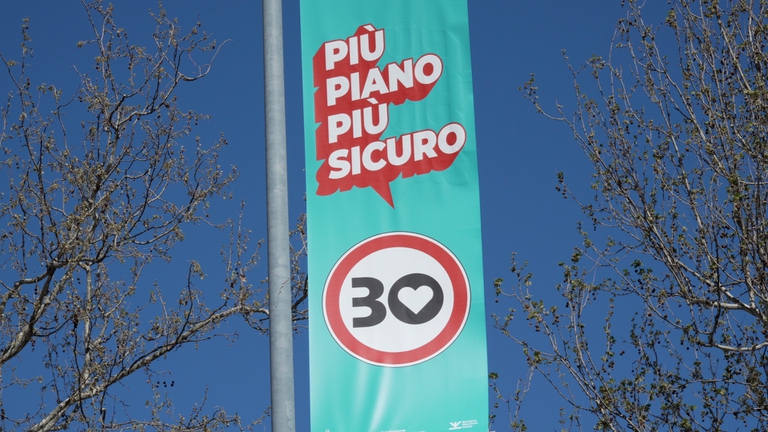https://www.lifegate.it/video/bologna-citta-30
- |
From 16 January 2024, Bologna has introduced a speed limit of 30 kilometers per hour on most of its urban streets.The Emilian capital has transformed itself into a 30 city, joining a European movement that aims to make urban centers more safe, livable And sustainable.But why are more and more cities deciding to "slow down"?The decision to lower speed limits is driven by a series of key reasons, first and foremost the road safety.

In recent years Bologna has recorded a considerable increase in road accidents with injured people: In the 2022, occurred in the metropolitan city 4,095 accidents, 386 more than the previous year, with 56 dead.Most of these, around 72 percent, occurred in an urban context, with over half concentrated within the municipality of Bologna, where half of the deaths also occurred.
This data made clear the need to think about preventive measures to improve safety of motorcyclists, cyclists, pedestrians and motorists and the introduction of the speed limit fits precisely in this context.The first statistics, two months after the introduction of the limit, are encouraging, as highlighted by the mayor of Bologna, Matteo Lepore:“We gave ourselves six months to have a minimum scientific collection of data.But we have two months of indicators that already show a positive trend, for example the decrease in injuries, the decrease in pedestrians hit, we are around 15-20 percent of both (...) and above all the severity of injuries has decreased.This is now a fairly clear indicator:in approximately two months, sixty fewer people went to the emergency room in serious conditions."
But, as he also explained to us Simona Larghetti, municipal councilor of Bologna, founder and former president of the Salvaiciclisti-Bologna association and of the Bologna municipal bicycle consultancy from 2013 to 2021, in addition to improving safety, the new speed limit is part of a much broader strategy to improve the quality of urban life.
A new way of living and thinking about the city
With safer streets and less traffic, Bologna hopes to encourage the use of alternative means of transport such as bicycles, as well as to strengthen the use of public transport.A key element of this strategy is the new tram project, which will integrate and improve existing public road transport in the urban area.
Currently, the city is intensifying work on the construction of tram lines, which is expected to be completed by 2026.This project, in fact, is part of the National Recovery and Resilience Plan (Pnrr) and is managed in line with the Urban Sustainable Mobility Plan (Pums) of metropolitan Bologna, which aims to transform city mobility by 2030 with objectives that include increasing accessibility and road safety, improving liveability and urban quality, as well as the fight against air and noise pollution and climate protection.
Living in a city 30 means knowing that there is attention and care given to relationships between people
As he underlined to our microphones Sara Poluzzi, spokesperson for the Bologna 30 committee, in the coming months the city will see significant changes to its road structures to facilitate this new era of mobility.Therefore, speed reduction in Bologna is part of a broader approach to sustainable mobility, which constitutes one of the fundamental pillars of this initiative which not only aims to reduce road accidents, but also to reduce traffic noise and harmful emissions. , thus contributing to the fight against air and noise pollution.
The reactions of the Bolognese to the city 30
How they welcomed this transformation the people of Bologna?Many welcomed the innovation, appreciating the advantages in terms of safety and liveability, and on 16 March the associations that have always supported città 30 organized an event which was above all a great opportunity to party.
On the other hand, other citizens have expressed their opinion in recent months concerns about increased traffic and inefficiencies in public transport.As Simona Larghetti underlined, Bologna is in a phase of change and is experiencing the beginning of a new way of thinking about the city and often, as happens in these cases, a certain resistance to change emerges.However, Mayor Matteo Lepore's perception is that, after the first weeks of adaptation, many Bolognese have revised their opinion:by experimenting with the new legislation, they recognized the feasibility and benefits of respecting the speed limit.

According to Simona Larghetti, then, the concept of maintaining high speeds in the city often turns out to be a utopia, considering that the average urban speed is naturally low due to traffic and frequent stops.This observation is confirmed by Traffic index 2023, which highlights how already in 2023 the average speed of motorists in Bologna was 32 kilometers per hour.The new speed limit, therefore, would seem to align with already existing travel times, showing that adaptation to change could be less radical than some fear.
While waiting to understand how the situation will evolve, the Bologna experiment is already emerging as an important case study for other Italian cities that are looking at the future of urban mobility with a careful eye on sustainability and safety and that have already introduced or are about to introduce large areas of the city 30 as Milan, Turin, Parma, Genoa And Brescia.
